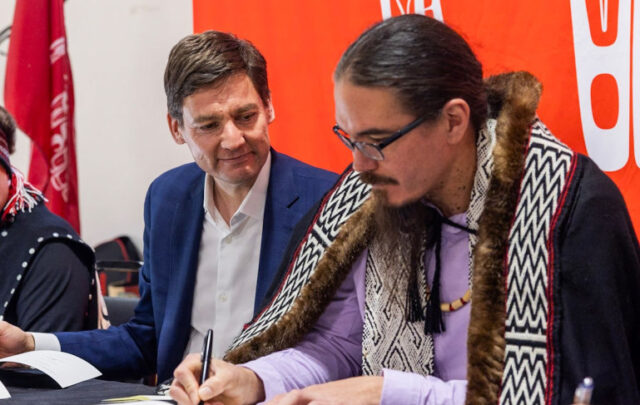Originally published as part1 of the forum “What’s Next for the Global Movement” by the Great Transition Initiative: https://greattransition.org
In March 2020, just as the coronavirus lockdowns were starting here in the US, Transition Movement founder Rob Hopkins published a new post to his blog titled “What Did Sisyphus Dream of?”2 In it, he retells the Greek myth of a man condemned to push a boulder uphill forever and connects it to how many activists feel about working for a better world. We push and push, only to have our hopes tumble back down to the bottom and be forced to begin again. However, Hopkins doesn’t stop there:
How would it feel to be on the other side of the hill, doing the work we do in a context where gravity is our friend? In a context where policy-making, and finance, and cultural norms are behind what we do, not in opposition to it? It would feel like a very different world, where policy and funding come to be in service of the rapid transition, where culture and stories of what’s ‘normal’ rapidly change, where the social permission for flying and other high carbon behaviours rapidly shift. From our position on this uphill side of the slope, it’s hard to imagine it, but imagine it we must.
Although we clearly have not reached the other side yet, something eventually has to give. It is said that all revolutions seem impossible until they happen. From 9/11 to the Great Recession to the election of Donald Trump to the COVID-19 pandemic, major world events continue to confound our expectations.
I am convinced that historic change will occur within my lifetime, but exactly how soon it will come and whether it will be positive or negative on the whole, I am less certain. What we do in the coming years and decades will have a significant impact on its trajectory. As the Great Unraveling continues apace, the need for radical change will become more apparent, causing more and more people to seek out alternatives. At that point, the winds of change will be blowing at our backs. Our job as evolutionary leaders is not primarily to create this wind, but to be ready to harness it when it comes.
So what are the most important things we can do to steer humanity towards a regenerative future? In times of turmoil, which path is chosen depends on two main factors. I call them “The Two Imperatives.”
We need to make the regenerative vision universally known: To accomplish this, we need to do everything in our power to familiarize as many people as possible as soon as possible with concepts like the limits to growth, energy descent, relocalization, permaculture, and Transition Towns. The more people have an accurate understanding of the root causes of the Great Unraveling and are aware of regenerative solutions, the less likely we will be to demonize and scapegoat each other when times get even tougher than they are right now.
At the moment, these ideas are mostly unknown beyond a relatively small subculture of activists and other cultural creatives, but they need to be front and center in every discussion about our collective future. People need to be having conversations about them at coffee shops, churches, workplaces, and kitchen tables. The mainstream media needs to spend a lot more time covering the regenerative communities movement, and politicians need to be pressed about their plans for the Great Transition on debate stages.
Humanity always needs a guiding story, a better future to reach for. We can’t help it. We tell ourselves stories to make sense of our lives and our world. They provide us with reference points and a sense of direction, offering us meaning and purpose.
For the past century, humanity’s dominant story has been the “American Dream” of upward mobility and middle-class prosperity for everyone, two-and-a-half kids, and a white picket fence. While this isn’t necessarily a bad vision, it has always been a lie. It is fundamentally unsustainable and has always been built on the backs of someone else: slaves, immigrants, nature, and future generations. Although it originated here in the US, the American Dream has since been exported around the world, both by persuasion and by force.
Thomas Kuhn wrote that paradigm shifts occur when a previously established model is found to no longer adequately explain new realities.3 In that space of uncertainty, new theories can be proposed and experimented with. Those that fit best with the totality of our knowledge and most accurately predict the future are adopted, while those that don’t are eventually cast aside.
As a candidate for the next American Dream, the regenerative vision has a lot going for it. It is compelling not only because of how it joins optimism with practicality, but also because of how it honors who we fundamentally are as people. The overwhelming speed, complexity, abstraction, and isolation of modern life has not been making us happier. It has been making us sick. The regenerative vision points to a familiar but largely forgotten way of life that could be slower, simpler, and more satisfying, lived in closer connection with self, family, community, and nature.
We need to develop successful practical alternatives to the status quo in as many places as possible: Since regeneration runs so counter to the logic of the Industrial Growth Society, we also need to prototype living examples of the future we want. Practical projects enable people to experience for themselves how abstract concepts like degrowth, mutual aid, and community resilience manifest in the real world and help them trust that they are nothing to be afraid of.
We need to recognize how big an ask Transition actually is. If you have kept all of your eggs in the basket of the Industrial Growth Society your entire life without any of them breaking, it is reasonable to be skeptical when a stranger walks up to you and says: “Why don’t you take all your eggs out of that basket and put them in ours?” You might want to take a long, hard look at that basket first.
To convince people that our basket is big and sturdy enough, we need to prove that our ideas can work, not just a little in a few places, but a lot everywhere. We need to prove that regenerative solutions can put money in people’s pockets, food on their tables, and roofs over their heads. We also need to prove that people will be happier living this way.
However, if this movement of movements can start changing things for the better at scale, people will notice. Eventually, we might even be able to show a clear contrast between communities that are actively transitioning and thriving as a result and those that are failing to hang on to the past.
These are the two big things I believe we need to do to give ourselves a chance of winning the future, for ourselves and all life. While it is almost inconceivable right now that regeneration could become the dominant paradigm guiding the future of humanity, if we can fulfill these Two Imperatives far enough in advance of global systems collapse, we can shift the Overton window. Unfamiliar and unproven ideas often appear radical at first, but can gradually become perceived as more and more acceptable, sensible, and popular over time. Some previously unthinkable ideas may even end up becoming our new normal.
Endnotes
1. This is a lightly edited excerpt from the forthcoming book, The Regeneration Handbook: Transform Yourself to Transform the World by Don Hall, which will be released in June 2024 by New Society Publishers.
2. Rob Hopkins, “What Did Sisyphus Dream of?” Imagination Taking Power, March 4, 2020, https://www.robhopkins.net/2020/03/04/what-did-sisyphus-dream-of.
3. Thomas Kuhn, The Structure of Scientific Revolutions (Chicago: University of Chicago Press, 1962).





